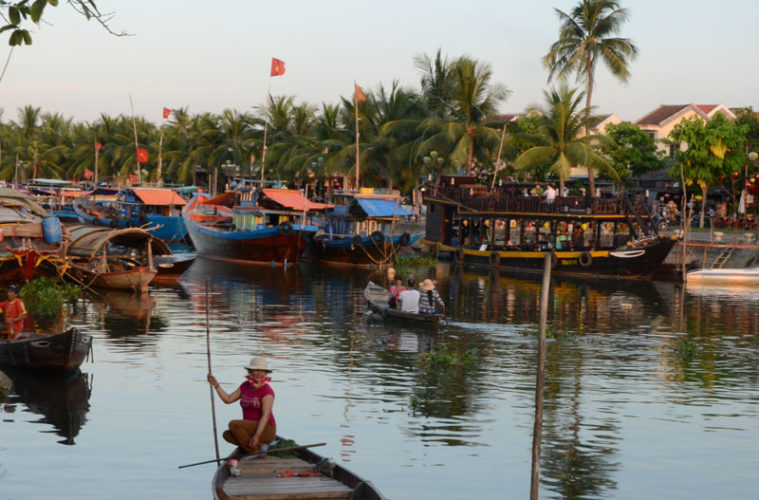If you’re looking for delicious food, amazing scenery and friendly people, Vietnam is still one of the most affordable destinations for South Africans. Here are five things you need to know before planning a trip
The capital
Hanoi is a noisy, bustling city with people everywhere. Then there are the cars, motorcycles (more than five million of them), bicycles, taxis and cyclos. The first thing you need to learn is how to cross a Hanoi street and survive. Walk straight towards your destination without hesitation and the traffic will pass around you.
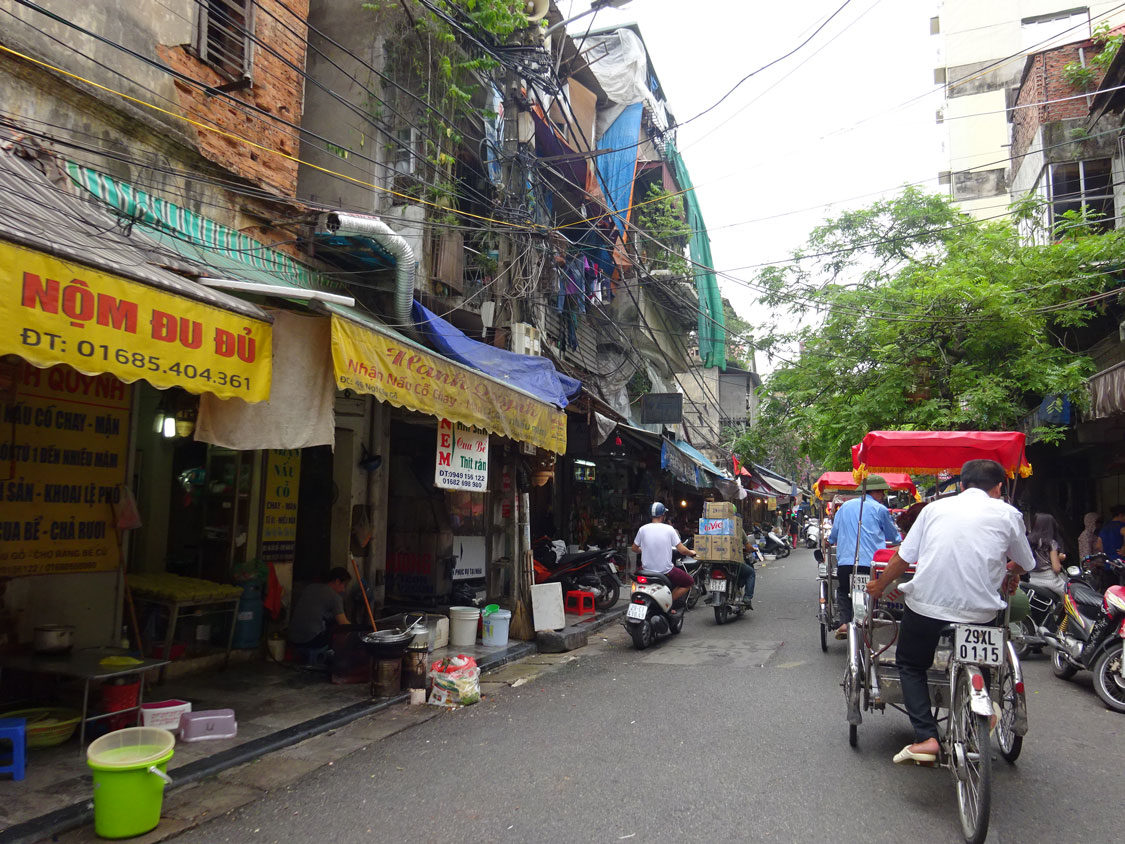
The old quarter in Hanoi with its narrow streets draped with electricity lines.
Once you’ve made your way through the old French part and the usual tourist sites of the capital, visit the historic Old Quarter. Here sagging electrical cables zigzag across narrow streets hemmed in by buildings and you can buy anything from paper and coffee to herbal medicines.
Local tours
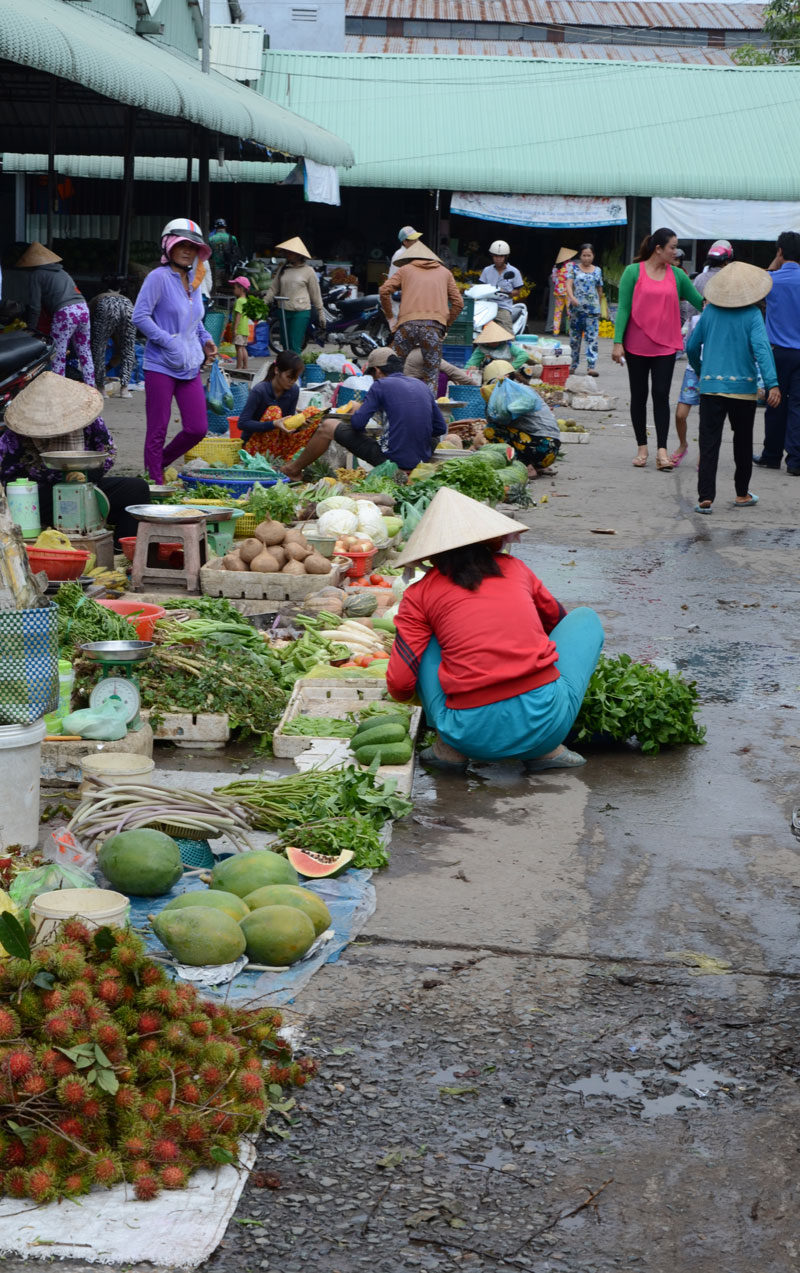
Markets have an amazing variety of unusual vegetables such as a water-loving green vegetable called ‘morning glory’ which was served at most meals.
The ‘Food on Foot’ evening tour where you can sample an array of local cuisine comes highly recommended. Then there is an ‘Off the Beaten Track’ trip by ferry that then takes you into the countryside by commuter train, where you could spontaneously be invited to a local wedding (and taste their version of witblitz) or learn about growing rice.
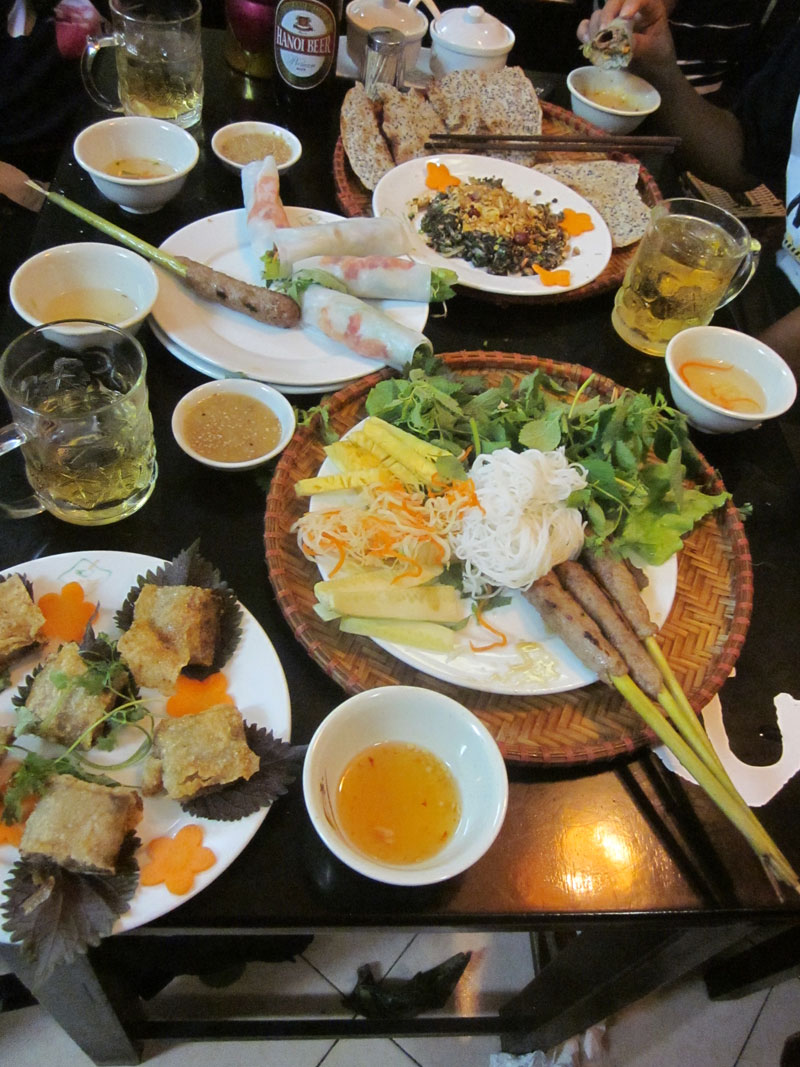
A meal of six courses, all brought at once and accompanied by beers.
Into the North
Head North to Halong Bay, a UNESCO World Heritage site. In the North, the Vietnamese still bury their dead in tombs in the rice fields.
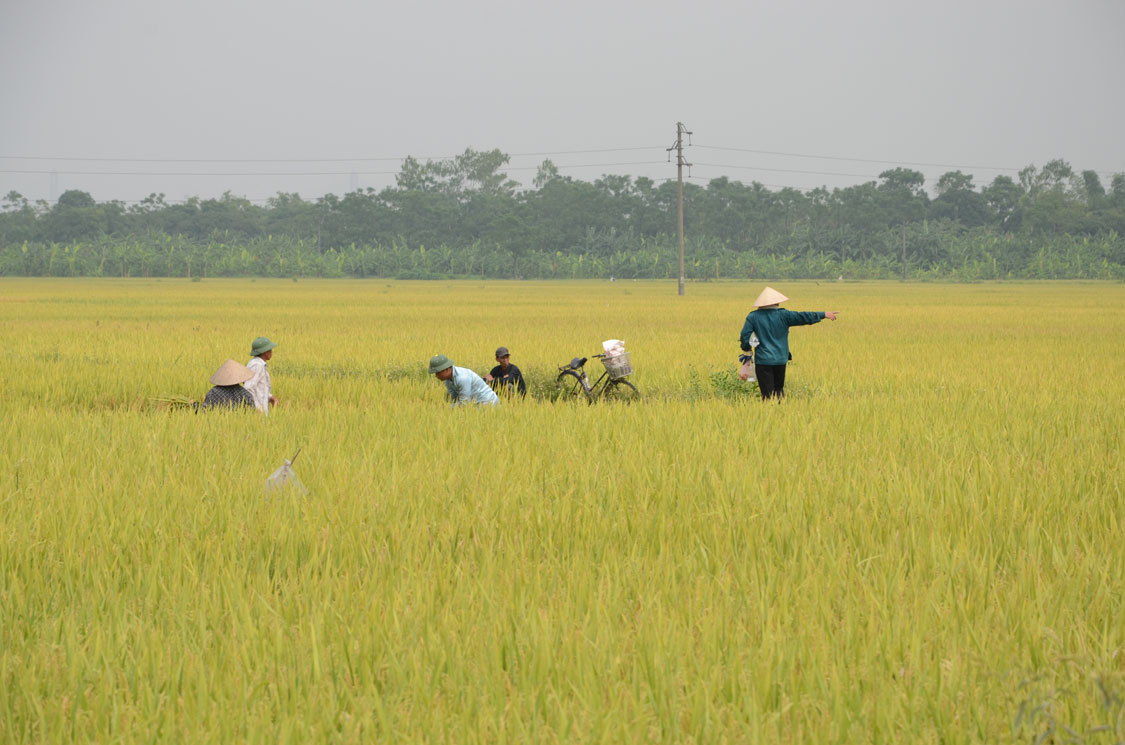
Rice, an import staple and major export, is still farmed in the traditional way.
Photographs don’t do the scenery justice as they can’t convey the majesty and scale of the towering limestone islands. Kayaking, visiting floating fishing villages, swimming and exploring caves, are all offered.
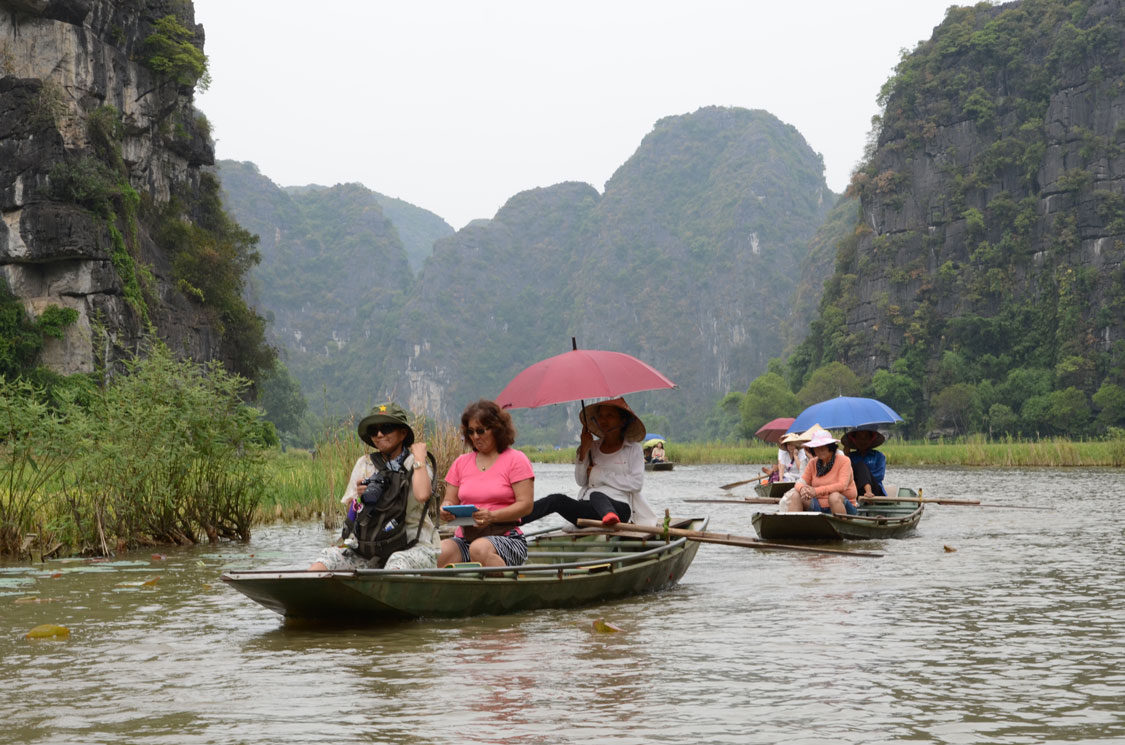
Cruising down the Ngo Dong river to the Tam Tam Coc caves in flat-bottomed sampans that are rowed by foot.
The Reunification Express train
Take an overnight journey to the historical Imperial City of Hue. You can visit the Imperial Citadel (which contains the Imperial and Purple Forbidden cities), with its moat, enormous bastions, palaces and pavilions. Some of the buildings, which date back to the early 1800s, were severely damaged during the war, but are being restored with the help of foreign funds.
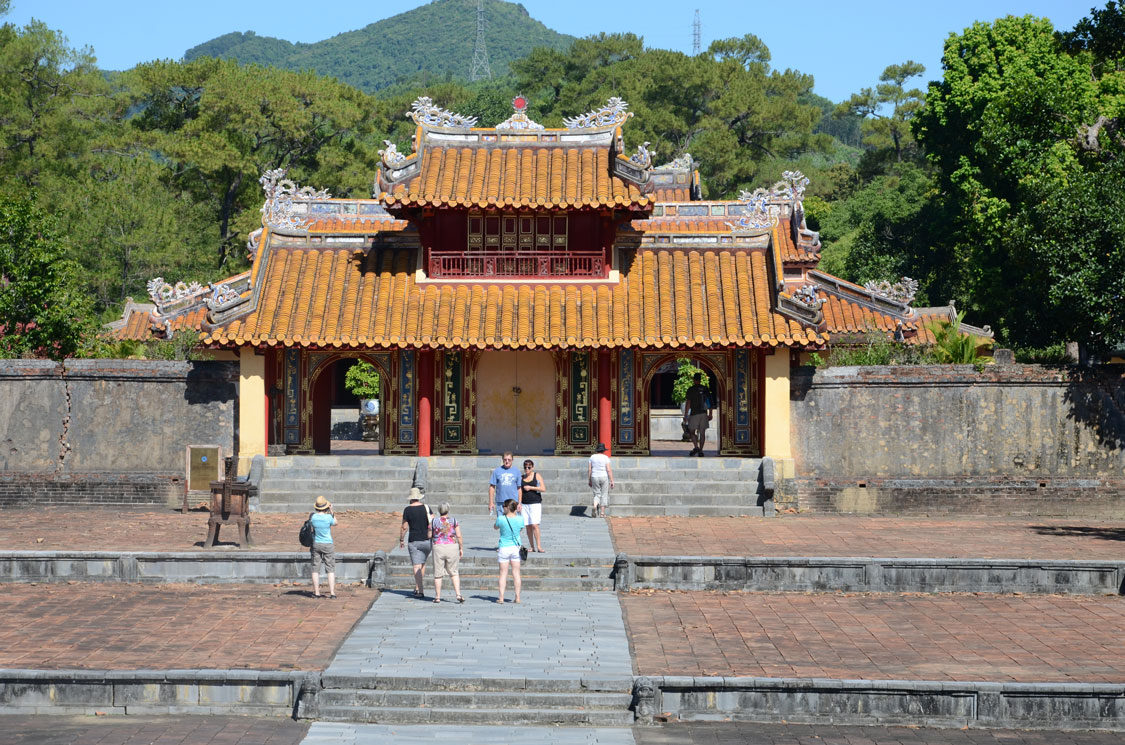
The tomb of Emperor Minh Mang (1841) outside Hue.
Hoi An
The Hai Van pass via Danang (the former US air force base and setting for the television series China Beach), takes you to the ancient city of Hoi An. This popular tourist destination is small enough to explore on foot. Stroll through the old quarter, stop for a massage and shop for shoes, clothes, jewellery or spectacles, which are made to measure. Enjoy watching the people go about their daily lives and marvel at the variety of fresh fruit and vegetables available.
The women shop daily (there’s no refrigeration) and fish are kept alive in bowls oxygenated with little aquarium pumps. At night, Hoi An comes alive: markets and streets are lit by handmade paper lanterns, street vendors sell their wares, boats cruise along the river and music and laughter echoes from the nightclubs. End your stay with a bicycle ride to the beach, a morning cooking course or a visit to Tra Que vegetable village.
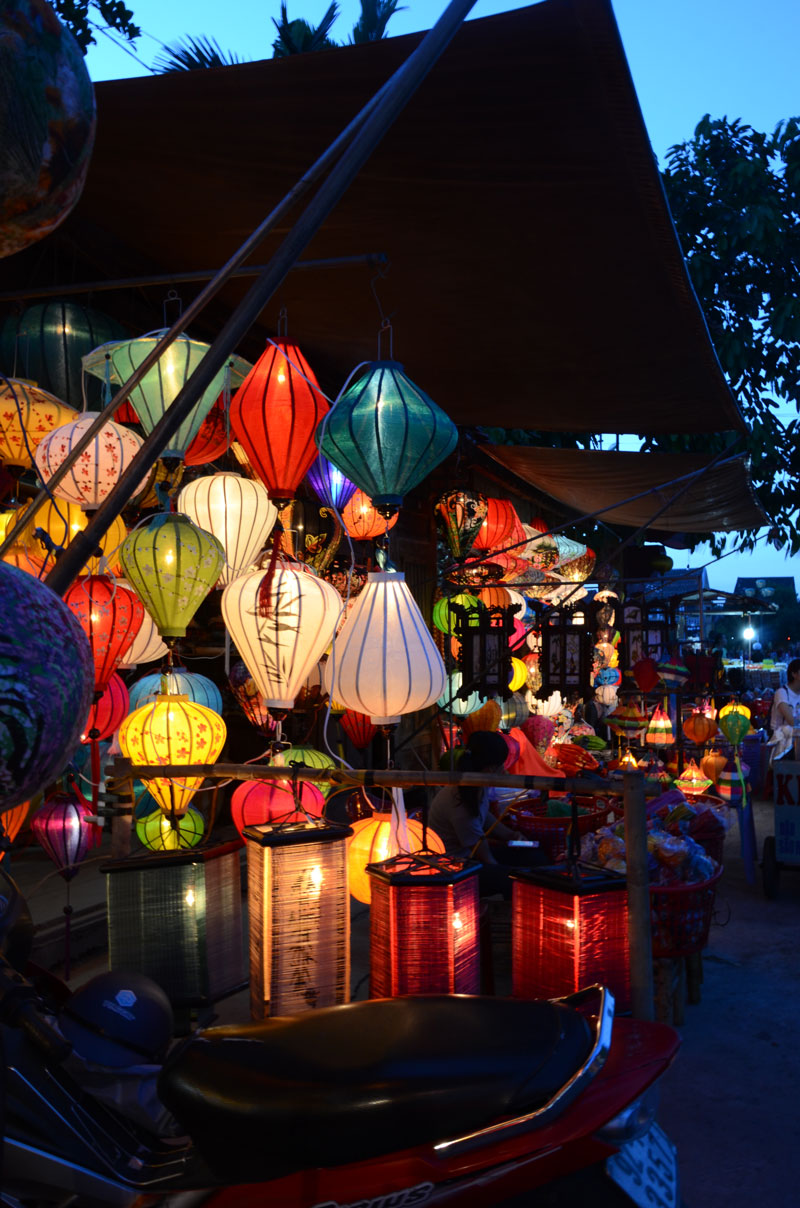
In Hoi An, handmade paper lanterns light up the night markets.
Down South
In Ho Chi Minh City (Saigon), downtown skyscrapers dwarf traditional buildings and the French influence can be seen in the majestic Opera House and Notre Dame Cathedral. Visit the War Remnants Museum where graphic pictures and displays of American helicopters, tanks and planes, highlight the atrocities of what the Vietnamese call the American War. Take a bus trip through to Vietnam’s rice basket and into the Mekong Delta. Here, life revolves around the vast river and maze of backwaters and islands. Ramshackle wooden houses lean over the water on stilts while boats are always on the move. On a boat trip to the floating market, you can also visit a fruit farm to see, and taste, some unusual tropical fruits such as dragon fruit, or try your hand at making rice paper, which is not a skill that’s easy to acquire.
Travel Tips
NICE TO KNOW As menus don’t always have English translations, remember chicken is ga, fish is ca, pork is thit and duck is vit (both the latter have a dot under the i).
NEED-TO-KNOW If you’re asked where you come from, it’s Nam Phi (South Africa). Then cam on means thank you and khong is no.
SHOPPING Hoi An is the place to go, but if you plan to order things like clothing that needs to be measured and fitted, do this as soon as you arrive to allow time for alterations.
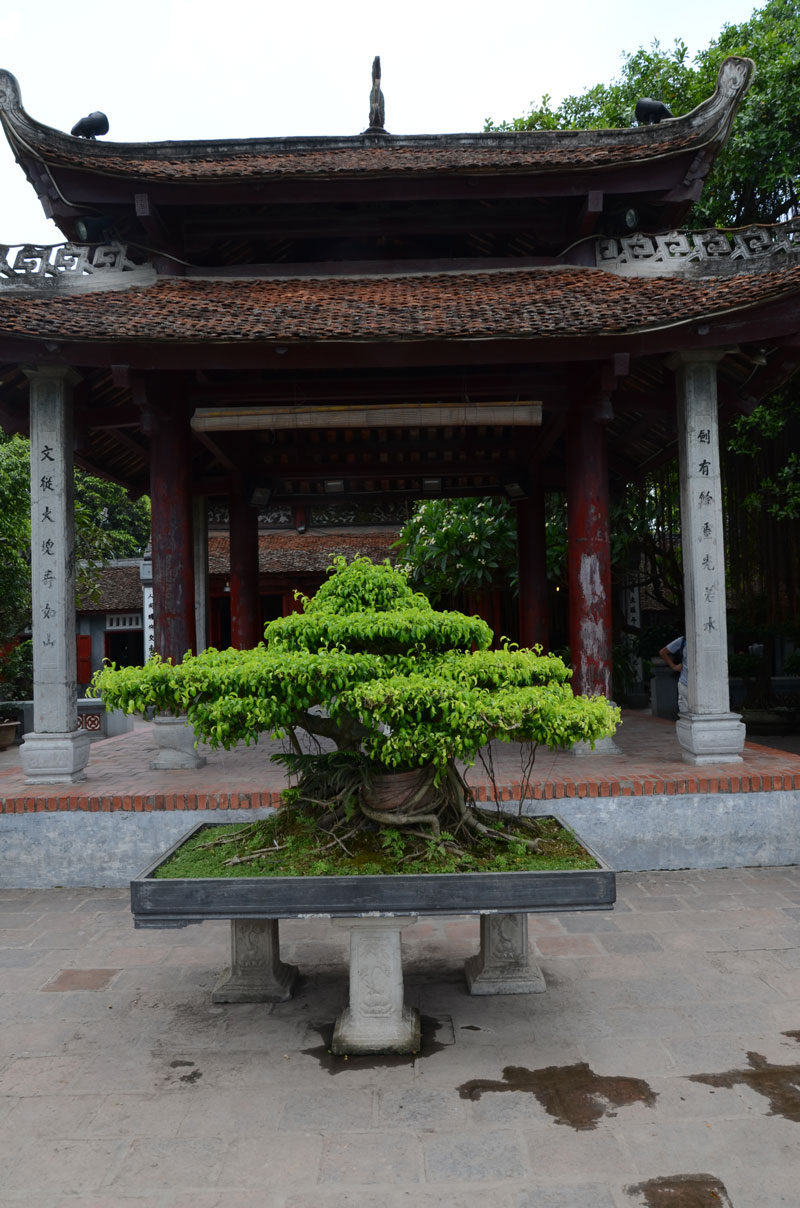
Venerable bonsai trees created from fig tress, ficus spp. or indigenous yellow woods are found at most temples.
Planning your trip
BOOK A TOUR Garden and Home travelled with On the Go Tours [email protected] or visit onthegotours.com
GETTING THERE Arrive a few days before your tour to get over the jet lag. The simplest route is with SAA or Singapore Airlines via Singapore or Hong Kong. There are usually special add-ons for travellers staying over in these cities for a few days. Fly on Vietnam Airlines to Ho Chi Minh City or Hanoi.
GETTING AROUND Shorter trips in coaches are usually arranged by your tour group, but there are numerous specialised trips. Awesome Tours in Hanoi is efficient and good value for money. Trains run between Hanoi and Ho Chi Minh City and up to the Highlands. Buses link most centres, but traffic is slow.
VISAS A visa is required and the easiest way for South Africans to get one is through an agent.
WHEN TO GO There’s no best time to go. Vietnam is a long country so when the weather is perfect in the north it’s not so good elsewhere. It can get cold in the north with snow on the mountains, but is also hot and humid at times. Tropical downpours aren’t uncommon.
WHERE TO EAT Although there are a number of well-known franchises and street vendors, it’s also fun to find restaurants frequented by locals. In Hanoi, try Net Hue Restaurant and in Hoi An, Ms Vy’s Morning Glory Restaurant.
CURRENCY The currency is the Vietnamese Dong (VND).

